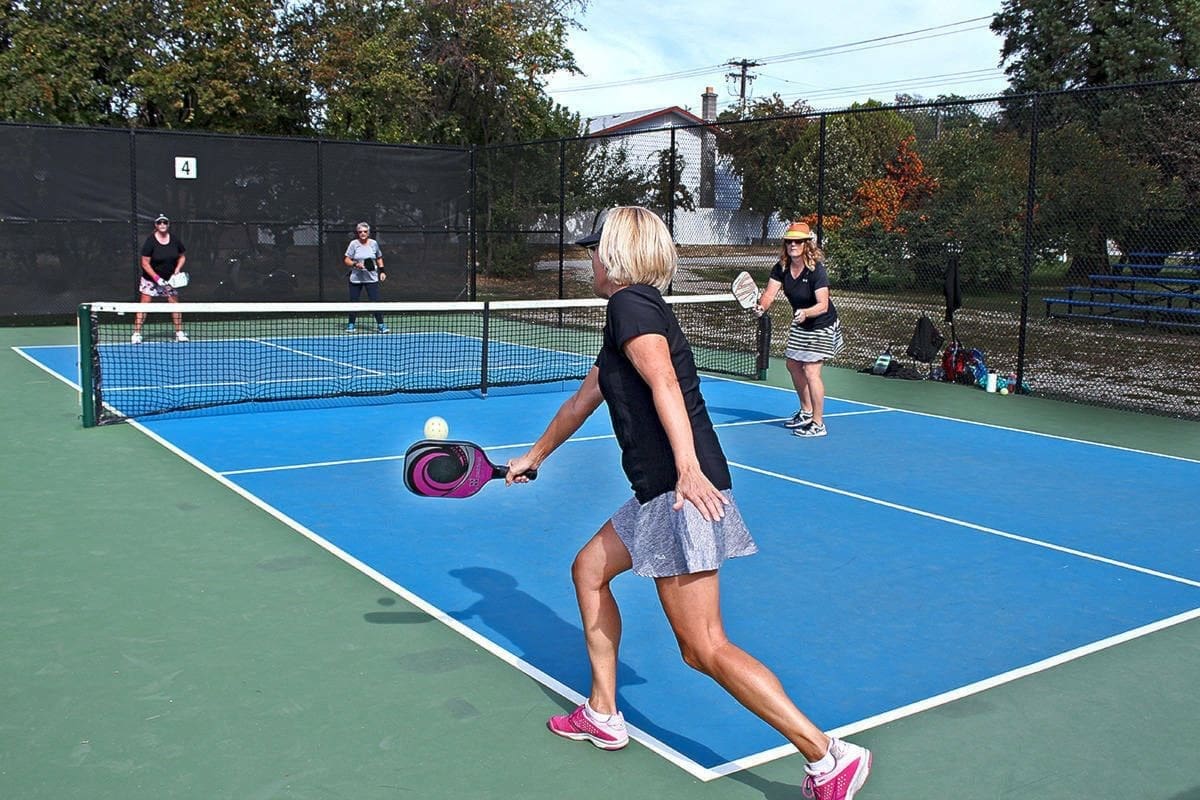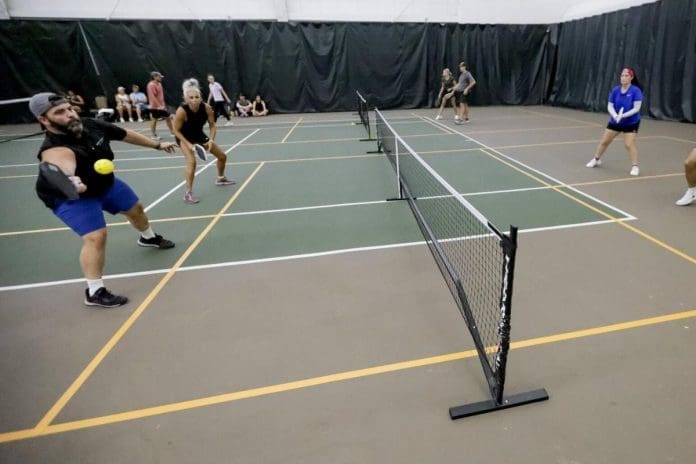How to Make A Pickleball Court At Home: Pickleball is taking the nation by storm, attracting players from every age group and background. As communities scramble to keep pace with this growing enthusiasm, a vital question emerges: how can we create more pickleball courts? One innovative answer lies in repurposing existing concrete slabs pickleball courts as seen in the recent video on Twitter (now X).
A Pickleball Court Crisis
Despite its surging popularity, the reality is stark: many communities face a significant Pickleball Court Crisis of dedicated pickleball courts. As the demand for this engaging sport continues to rise, the struggle to find available, playable spaces becomes increasingly evident. Players often find themselves vying for limited court time, leading to frustration and missed opportunities. This pressing need for more courts makes the idea of converting underutilized concrete slabs not just a creative solution, but a necessary one.
Moreover, communities are beginning to look at converting existing basketball and tennis courts into pickleball venues. This transition is a strategic response to the Pickleball Court Crisis, allowing municipalities to maximize their facilities while catering to the growing pickleball demographic. By adjusting lines and using portable nets, these courts can quickly adapt to meet the needs of pickleball players, making them an essential part of the solution to the court crisis.
Why Concrete is the Ideal Choice
Economical and Efficient
Concrete slabs are often found in a variety of locations, from old parking lots to underutilized gymnasiums. Transforming these neglected spaces into pickleball courts is not only practical but also budget-friendly. Instead of pouring funds into building new facilities, communities can breathe new life into existing concrete, saving both time and money in the process.
Adaptable Locations
The versatility of concrete slabs pickleball courts makes them suitable for a range of environments. Whether it’s a vacant warehouse, a schoolyard, or a community center, these slabs can easily morph into vibrant pickleball venues. This adaptability ensures that players have convenient access to courts right in their neighborhoods.
Year-Round Playability
Concrete is tough enough to endure various weather conditions. Unlike grass or dirt, which can become muddy and unplayable, concrete provides a reliable surface for year-round action. This durability is a significant advantage in regions where weather can be unpredictable, allowing players to enjoy their favorite game without interruption.
Pretty much any concrete slab could and should be made into a pickleball court. 🪚 pic.twitter.com/jRVxYMTuXF
— The Kitchen Pickleball (@TheKitchenPB) July 16, 2024
Pickleball Courts Specifications
Court Specifications
A standard pickleball court measures 20 feet wide by 44 feet long for both singles and doubles matches. The court is divided by a centerline, and it features a non-volley zone, commonly known as the “kitchen,” which extends 7 feet from the net. Accurate court markings are essential for ensuring fair and enjoyable play.
Surface Options
While concrete is a favored choice for pickleball courts, the game can be played on various surfaces, including asphalt, sports tiles, and even grass. Each type of surface offers a unique playing experience, but concrete stands out for its longevity and low upkeep.
Necessary Equipment
Beyond the court, having the right equipment is crucial. A regulation pickleball net stands 36 inches high at the sides and 34 inches high at the center. Investing in quality nets and paddles is vital for enhancing the overall playing experience.
Steps to Create a Pickleball Court
Evaluating the Space
Before diving into the conversion process, it’s essential to assess the concrete slab’s suitability. Consider the dimensions, current conditions, and accessibility. While a standard pickleball court is 20 feet wide by 44 feet long, some flexibility can be applied based on specific circumstances.
Preparing the Surface
Preparation is key. The concrete must be cleaned, any cracks repaired, and proper drainage ensured. A smooth and even surface is non-negotiable for delivering a high-quality playing experience.
Court Marking
With the surface ready, the next step is to mark the court. Using durable paint or tape, create the essential lines for boundaries, service areas, and the non-volley zone. Clear markings are critical for maintaining the integrity of the game.
Enhancing the Experience
To create a welcoming atmosphere, consider adding amenities like benches, shade structures, and nets. These features not only improve player comfort but also make the courts more inviting for spectators.
Addressing Challenges
Gaining Community Support
Transforming concrete slabs into playable courts requires the backing of the community. Engaging local residents and stakeholders in the planning phase can generate enthusiasm and help secure the necessary funding or resources.
Maintenance Responsibilities
Though concrete is sturdy, it still requires regular upkeep. Periodic cleaning and inspections are essential to keep the court in excellent condition and ready for action.
Mitigating Noise Concerns
Pickleball can be a lively sport, and noise might be a concern for nearby residents. Scheduling play during specific hours can help alleviate potential issues.
Repurposing concrete slabs pickleball courts offers a practical and imaginative response to the rising demand for playing spaces. By utilizing existing structures, communities can foster inclusivity and promote physical activity. With thoughtful planning and active community involvement, any concrete slab can transform into a thriving pickleball court, uniting people through the joy of the game.

News in Brief: How to Make A Pickleball Court At Home
Pickleball’s rapid growth highlights a pressing need for more dedicated courts, prompting innovative solutions like repurposing existing concrete slabs pickleball courts. Many communities face a shortage of playable spaces, leading to frustration among players. Converting underutilized basketball and tennis courts into pickleball venues is a strategic response, using portable nets and adjusted lines to maximize resources. Concrete is ideal for this purpose due to its durability, cost-effectiveness, and adaptability across various locations. To create a pickleball court, communities must evaluate the space, prepare the surface, mark the court, and enhance the experience with amenities. With community support and thoughtful planning, repurposed concrete slabs can become vibrant hubs for pickleball, fostering inclusivity and physical activity.
Also Read: Premier Level Standings After MLP DC 2024

